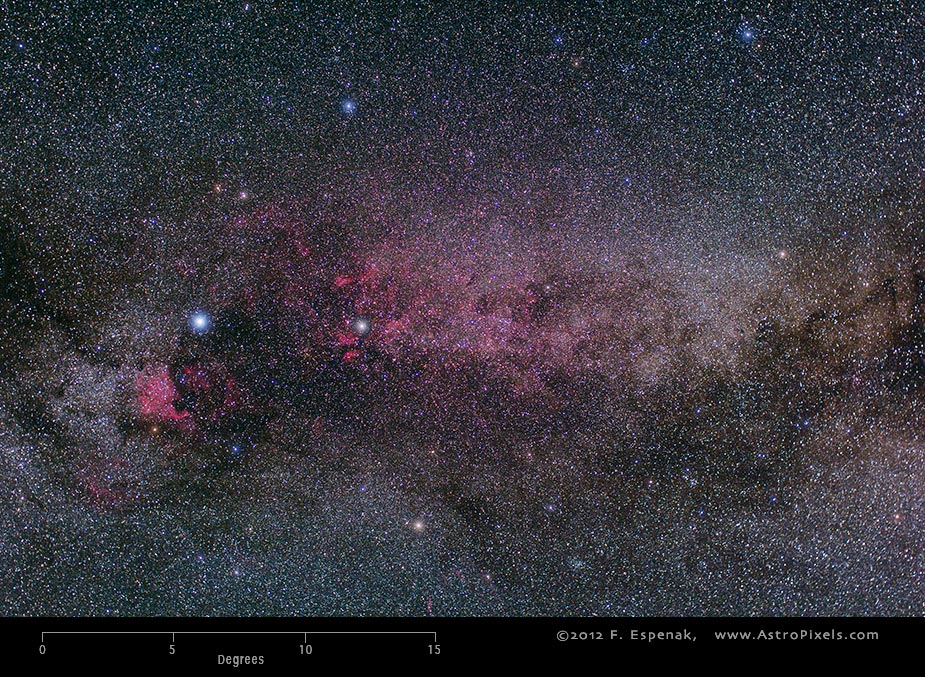Cygnus
Cygnus is a Northern Hemisphere constellation otherwise known as the Swan. It is one of the 48 Greek constellations originally described by the 2nd century astronomer Claudius Ptolemy (Wikipedia). Cygnus remains one of the 88 modern constellations defined by the International Astronomical Union (Wikipedia).
Cygnus (abbrev. = Cyg; genitive = Cygni) covers 804 square degrees or 1.95% of the celestial sphere making it the 16th largest constellation. It contains 262 stars brighter than apparent magnitude 6.5, the brightest star being Deneb (Alpha Cygnii). See the Cygnus Star Chart for a figure illustrating this constellation including the identification of its brighter stars.
Aquila Through Cygnus is a mosaic of several separate images through the Milky Way. An even larger mosaic captures Sagittarius Through Cygnus.
For more information see the entries for Cygnus at Wikipedia and U. Wisconsin. For a chart of Cygnus, see Cyg (IAU).
Technical Details
- Object: Cygnus
- Date/Time: 2012 Jun 16 at 08:04 UTC
- Location: Bifrost Astronomical Observatory, Portal, AZ
- Mount: Losmandy G-11 German Equatorial Mount
- Lens: Nikkor AI 35mm f/2
- Camera: Canon EOS 550D (Rebel T2i)
- Field of View: 35.3° x 24.0° at 24.5 arc-sec/pixel (web version: 138 arc-sec/pixel)
- Exposure: 2 x 240s, f/2.8, ISO 800 and 120s, f/2.8, ISO 800 with Cokin A830 Diffusion Filter
- File Name: Cyg-01w.jpg
- Processing (Adobe Camera Raw): Vignetting Correction, Noise Reduction, White Balance, Curves
- Processing (Photoshop CS5): Average Images, Curves, opacity (with diffusion image)
- Original Image Size: 3454 × 5179 pixels (17.9 MP); 11.5" x 17.3" @ 300 dpi
- Rights: Copyright 2012 by Fred Espenak. All Rights Reserved. See: Image Licensing.
